visiting in april
Updated: 08/10/2022
April is the start of spring in Yosemite National Park, making it the most lovely time to visit. The park comes to life with wildflowers, waterfalls, and wildlife. There are definite benefits to visiting Yosemite in spring and some drawbacks. Below, we’ve broken up your most common “when to go” questions into categories to make it easy to see if April is the best time for you.
benefits of visiting in april
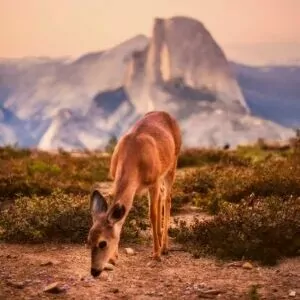 The biggest benefit of visiting in spring it is the awakening of the park after a long winter. In late April, wildflowers are blooming in the west Merced River canyon. As the first buds of tufted poppies and spider lupines spring up throughout fields, it is obvious that spring has arrived and more beauty and life will come. While winter is ethereal with its white shawl over the valley and summer is a mix of green and brown, spring brings a burst of color as the wildflowers explode throughout the park. Waterfalls are rushing this time of year as the snow melts at higher elevations, and wildlife is out and about, excited about warmer weather and the abundance of food that is no longer covered in snow.
The biggest benefit of visiting in spring it is the awakening of the park after a long winter. In late April, wildflowers are blooming in the west Merced River canyon. As the first buds of tufted poppies and spider lupines spring up throughout fields, it is obvious that spring has arrived and more beauty and life will come. While winter is ethereal with its white shawl over the valley and summer is a mix of green and brown, spring brings a burst of color as the wildflowers explode throughout the park. Waterfalls are rushing this time of year as the snow melts at higher elevations, and wildlife is out and about, excited about warmer weather and the abundance of food that is no longer covered in snow.
Another benefit of visiting Yosemite in spring is the lack of crowds. There are more visitors than in the winter months, but it is much more manageable than in the summer. While many trails remain snow-covered in April, some trails in Yosemite Valley, Hetch Hetchy, and Wawona may be snow-free in April and won’t require snowshoes or microspikes.
Visitors find some roads closed, but other inaccessible locations in the valley during winter are now open. Mariposa Grove Road typically opens in April. You are still able to park your car at the Mariposa Grove Welcome Center and take the 2-mile Washburn Trail to the grove. Once the road opens, you can park your car at the Welcome Center and take a shuttle bus to the grove; the bus leaves from the parking area every 15 minutes. This way, you still have the energy and time to take one of the longer treks at the grove instead of hiking to get there.
Typically milder temperatures and warmer days bring a happy medium between the snow-gear-required winters and the very hot and dry summers.
drawbacks of visiting in april
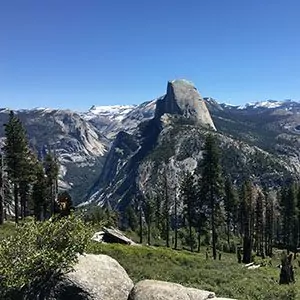 The biggest drawback to visiting Yosemite in April is that Tioga Road and Glacier Point Road are still closed; they don’t open until late May or June. This leaves visitors with access to only the valley, causing congestion on the limited roads in the park. The weather in April can be unpredictable. For the most part, it’s warmer, but it will occasionally snow. Snow chains are required in the early spring, which can spell disaster on a trip if visitors aren’t prepared.
The biggest drawback to visiting Yosemite in April is that Tioga Road and Glacier Point Road are still closed; they don’t open until late May or June. This leaves visitors with access to only the valley, causing congestion on the limited roads in the park. The weather in April can be unpredictable. For the most part, it’s warmer, but it will occasionally snow. Snow chains are required in the early spring, which can spell disaster on a trip if visitors aren’t prepared.
Many trails in the park remain covered in snow through May, so your hiking options will remain limited. Four Mile Trail may be open halfway up but remains closed for the rest of the way; other iconic hikes like Yosemite Falls are open but may still have snow, making navigation and traction treacherous.
Another drawback of visiting in April is the decreased availability and increased accommodation prices. The winter days of picking lodges or campgrounds are gone, with first-come, first-served campgrounds filling up in good weather and prices on the lodges increasing. Campgrounds switch to reservations in April.
things to do in april
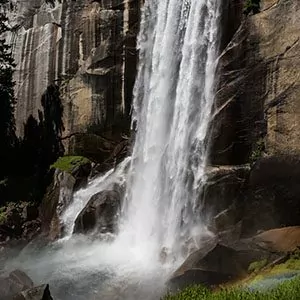 April in Yosemite is the perfect time to chase waterfalls. As the warmer weather begins to melt snow from higher elevations, even small creeks and streams are rushing with water. Many unnamed waterfalls cascade down massive granite walls of the valley, and big waterfalls, like Yosemite Falls and Bridalveil Falls, will be thundering like firehoses. Hiking is a great activity despite the possibly still snowy and definitely muddy conditions. Many trails at lower elevations are accessible and free from snow in late April. Mirror Lake Trail and Lower Yosemite Falls Loop provide a great perspective of the giant granite domes looming over the Valley, sometimes flowing with waterfalls. Hiking around Mariposa Grove and Wawona are also great options. Check out the best Yosemite hikes for more ideas.
April in Yosemite is the perfect time to chase waterfalls. As the warmer weather begins to melt snow from higher elevations, even small creeks and streams are rushing with water. Many unnamed waterfalls cascade down massive granite walls of the valley, and big waterfalls, like Yosemite Falls and Bridalveil Falls, will be thundering like firehoses. Hiking is a great activity despite the possibly still snowy and definitely muddy conditions. Many trails at lower elevations are accessible and free from snow in late April. Mirror Lake Trail and Lower Yosemite Falls Loop provide a great perspective of the giant granite domes looming over the Valley, sometimes flowing with waterfalls. Hiking around Mariposa Grove and Wawona are also great options. Check out the best Yosemite hikes for more ideas.
If the weather is unfavorable while you are visiting, you can visit The Ansel Adams Gallery, which offers photography workshops, free camera walks, and other activities. The Yosemite Museum is another great option if the weather restricts you from being outside; it features seasonal historical exhibits about Yosemite and the surrounding region. Both are located in the Visitor Center in Yosemite Valley.
If the weather permits, however, make sure to get outside and get those pictures. Photography is a huge activity in Yosemite in April. It’s difficult to take a bad picture in this place with its many waterfalls, bright and beautiful wildflowers, abundant wildlife, and stunning overall scenery. Try gathering collections of pictures of one type of thing, such as waterfalls, rocks, clouds, or wildlife, and then cherish the memories of your photo scavenger hunt.
Multiple companies offer horseback riding in Yosemite, which opens in the spring. The receding snow in the valley means that biking riding is again a great option for getting around.
Things to see in april
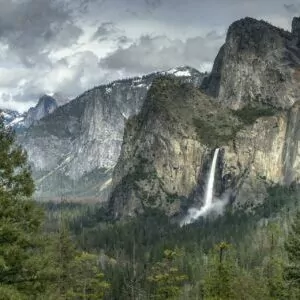 There are simply too many sights to see in Yosemite, and knocking them out in one trip would be egregious. Here is a short list of sights to put on the bucket list.
There are simply too many sights to see in Yosemite, and knocking them out in one trip would be egregious. Here is a short list of sights to put on the bucket list.
Waterfalls: The waterfalls in Yosemite are spectacular any time of year, but in spring, when the warmth of the sun and the longer days begin to melt the winter snowpack, the waterfalls burst forth like hundreds of firehoses and dump thousands of gallons of water over the valley’s towering cliffs. Bridalveil, upper Yosemite, Vernal, Nevada, Horsetail: the list goes on of these natural wonders that every visitor should get the chance to behold.
Tunnel Overlook: By far the most famous of the overlooks along the road that leads into the valley, the tunnel overlook is worth a stop no matter how many times you’ve seen it. With the sheer massiveness of El Capitan to your left, the thundering Bridalveil Falls to your right, Half Dome rising in solitude in the distance, and the Merced River threading its way through the valley, this is a can’t-miss photo opportunity. (The leftmost section of this view is shown in the image left).
Mariposa Grove: The shuttle should be running to Mariposa Grove by this time of the year, and visitors can take it instead of trekking to the towering Sequoias Grove. These giant trees were originally protected by President Lincoln in 1864 and continue to wow visitors today. The area offers many hiking trails as well.
Granite Monoliths: Perhaps the most recognizable cliffs in the world, El Capitan and Half Dome, are indeed wonders to behold. These must-see– or perhaps can’t-miss– features of Yosemite are iconic to the park and need to be experienced up close to really get a grasp on how big they are. Pictures don’t do them justice; take the time to get close to these massive rocks — El Cap is the largest single piece of granite in the world– and admire their sheer size.
Wildlife: Take some time to search out the wildlife in Yosemite; you won’t regret it. Mule deer lounge in the meadows, coyotes stalk the campground in the evening, and some black bears are out of hibernation and searching for food in the vegetation. Make sure to also look out for animals in the rivers, like otters and minks, and to the skies for eagles and owls.
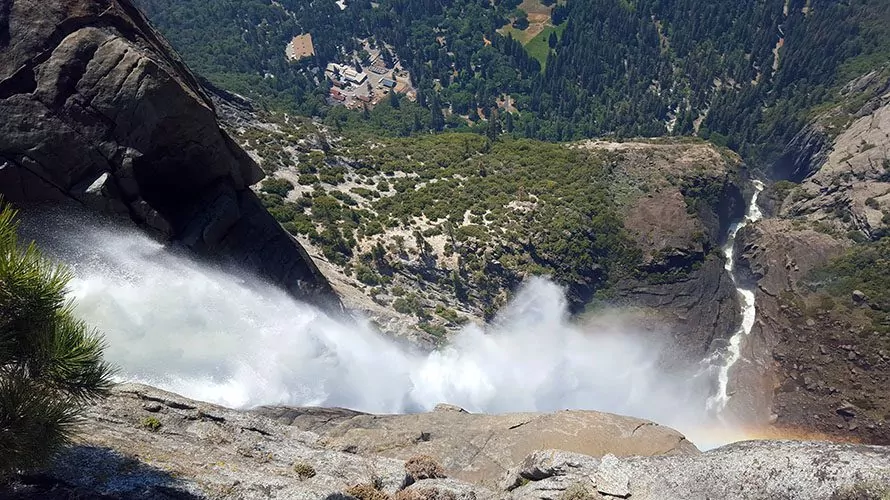
hiking in april
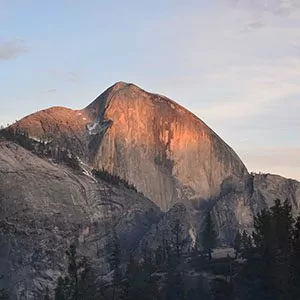 While many trails are still covered in snow in April, trails in lower elevations may be accessible. Mirror Lake Trail and Cook’s Meadow Loop in the Valley, Lookout Point in Hetch Hetchy, and Wawona Meadow Loop in Wawona may be options for hiking trails. Early mornings will be very chilly in Yosemite, so be prepared with hats, gloves, and warm layers. You can read NPS’ current conditions to see what trails are open before heading out for the day.
While many trails are still covered in snow in April, trails in lower elevations may be accessible. Mirror Lake Trail and Cook’s Meadow Loop in the Valley, Lookout Point in Hetch Hetchy, and Wawona Meadow Loop in Wawona may be options for hiking trails. Early mornings will be very chilly in Yosemite, so be prepared with hats, gloves, and warm layers. You can read NPS’ current conditions to see what trails are open before heading out for the day.
The Mist Trail up to Vernal Falls is usually open in April up to at least Vernal Falls. This famous and moderate hike gives visitors impressive views of Vernal Falls from a footbridge before becoming strenuous and climbing up significant and steep stone steps along the falls. These steps are nearly always slippery with the mist from the falls (hence the name) and can be treacherous for even experienced hikers. You can also reach Nevada Falls farther up the trail by taking the longer route on the John Muir Trail. These trails should be open in April, but exactly when and where they will open will depend on snowmelt.
The trails in and around lower Mariposa Grove should also be snow free by this time of the year though the upper grove may still have some snow. Hiking is much more feasible in April than it is in January, February, or even March, but some of your options may still be limited depending on snowmelt.
backpacking in april
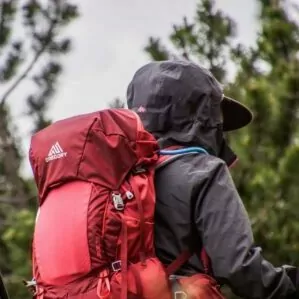 By April in Yosemite, backpacking is again an option, even if you might encounter some snow on the way. Any trail that is long enough to camp on takes you up and out of the valley above the typical 6,000-foot snow line in April. Of course, many campgrounds are open in April, and you can test out camping gear backpacking style if you would like.
By April in Yosemite, backpacking is again an option, even if you might encounter some snow on the way. Any trail that is long enough to camp on takes you up and out of the valley above the typical 6,000-foot snow line in April. Of course, many campgrounds are open in April, and you can test out camping gear backpacking style if you would like.
If you are set on doing some backpacking on the rims around the valley, there are a few options, although these should only be attempted by experienced backpackers who are confident in their skills and knowledge. A traverse along the North Rim above Yosemit (near El Capitan) or from Glacier Point is possible if the winter has been dry and the snow is low, and even then it won’t be accessible until late April.
Unlike during the winter months, cross-country skiing to one of the overnight ski huts throughout the park is not an option as they are only open for the winter. Backpacking experiences in April can be found if you book a guided tour or plan a snow camping adventure. Visitors should be aware that snow camping is dangerous and that all campers must adequately prepare for their treks.
weather in april
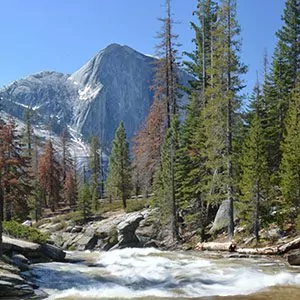 Yosemite is a massive park; thus, the temperatures and snow levels will vary depending on location and elevation. In April, many of the higher elevations, such as Tuolumne Meadows, are still closed due to snow. The average temperature in Yosemite Valley and Wawona in April is a high of 64 and a low of 37 degrees Fahrenheit (18/3 degrees Celsius). On average, it rains or snows for approximately six days in April.
Yosemite is a massive park; thus, the temperatures and snow levels will vary depending on location and elevation. In April, many of the higher elevations, such as Tuolumne Meadows, are still closed due to snow. The average temperature in Yosemite Valley and Wawona in April is a high of 64 and a low of 37 degrees Fahrenheit (18/3 degrees Celsius). On average, it rains or snows for approximately six days in April.
While the weather in April can bring unexpected weather systems– especially cold fronts– that can leave visitors unprepared. Evening temperatures are nearly freezing, and campers should bring cold weather gear. Don’t let the warmer temperatures at home fool you into thinking that the mountains will be warm as well. April is spring in Yosemite, but spring means cold weather and occasional snow.
Natural wildfires are not very likely to occur in spring because the earth is still so saturated with water and snow. However, the National Parks Service still occasionally has controlled burns that mimic natural fires for the health of the forest. While these can make the air hazy or smokey, they shouldn’t cause a risk to health because of air quality.
wildlife in april
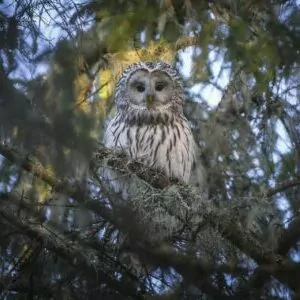 The wildlife in Yosemite in April is abundant and active. Coming out of the colder winter months, these animals are alive with the warmer weather. Visitors will see mule deer strolling through campgrounds or lounging in the meadows, marmots, chick monks, and squirrels scurrying to and forth. Of course, the iconic Yosemite Black Bears are making their way out of hibernation and into the view of visitors. For those who come to Yosemite for wildlife photography and want to do more than slow down and snap a picture of a bear out of the car window, April is a great time to visit as creatures are active. Coyotes slink around campgrounds at night, and many of the birds in this region are stunning to see, especially the owls, eagles, and other birds of prey that roam the skies or fly low among the trees.
The wildlife in Yosemite in April is abundant and active. Coming out of the colder winter months, these animals are alive with the warmer weather. Visitors will see mule deer strolling through campgrounds or lounging in the meadows, marmots, chick monks, and squirrels scurrying to and forth. Of course, the iconic Yosemite Black Bears are making their way out of hibernation and into the view of visitors. For those who come to Yosemite for wildlife photography and want to do more than slow down and snap a picture of a bear out of the car window, April is a great time to visit as creatures are active. Coyotes slink around campgrounds at night, and many of the birds in this region are stunning to see, especially the owls, eagles, and other birds of prey that roam the skies or fly low among the trees.
The recently reintroduced Yosemite bighorn sheep is on the shy side and can be seen if you have the patience to look for the herds of gray sheep among the gray granite they live in. The Merced River also occasionally boasts otters and mink, along with some of the park’s amphibians and and fish that have come out for the warmer weather. Yosemite’s more elusive residents, such as bobcats, fishers, mountain lions, and even the Sierra Nevada red fox, all live at higher elevations, and visitors that venture into the still snowy areas are more likely to see the tracks of these creatures than the creatures themselves. However, that is not out of the question.
Recommended Wildland trips in april
 Visiting Yosemite in April is wonderful as some of the snow has started to melt, and the weather has become a little warmer. But April can still be intimidating as it’s difficult to determine which roads and trails are open or not. Our Wildland Trekking guides are at your service when it comes to keeping up with the logistics so that you can enjoy the experience. We have many options for overnight camping and day hiking, and what follows are a few tours we especially recommend for April.
Visiting Yosemite in April is wonderful as some of the snow has started to melt, and the weather has become a little warmer. But April can still be intimidating as it’s difficult to determine which roads and trails are open or not. Our Wildland Trekking guides are at your service when it comes to keeping up with the logistics so that you can enjoy the experience. We have many options for overnight camping and day hiking, and what follows are a few tours we especially recommend for April.
El Capitan Traverse: If you’re determined to do some backpacking in Yosemite in April, this is your trip. The only backpacking trip we run in April, this 4 or 5-day trek will take you along the north rim of the valley and over the largest single piece of granite in the world, El Capitan. Snow is not impossible for this trip, so bring your winter gear and your sense of adventure for this spectacular backpacking tour.
Yosemite Valley Basecamp Tour: This guided base camp tour takes all the hassle out of a visit to Yosemite in April and lets you truly enjoy the season with a comfortable base camp for the evenings and wandering hiking adventures during the day. With tents, sleeping bags, sleeping pads, day packs, trekking poles, and all meals included, this trip is a must for those looking for a base camp hiking adventure.
Best of Yosemite Inn-Based Tour: Few things are better than relaxing in a cozy lodge after a long, exciting day of hiking in a national park. On this 5-day, inn-based tour, you’ll get to do just that at your comfortable accommodations after hiking some of the most spectacular treks in Yosemite National Park. Visit waterfalls, summit peaks, see stunning overlooks, and marvel at giant sequoias, all the while not having to worry about any logistics of your trip. All-inclusive with meals, accommodations, trekking poles, and a day pack, you won’t want to miss this exciting Yosemite adventure.
JOIN A GUIDED HIKING ADVENTURE
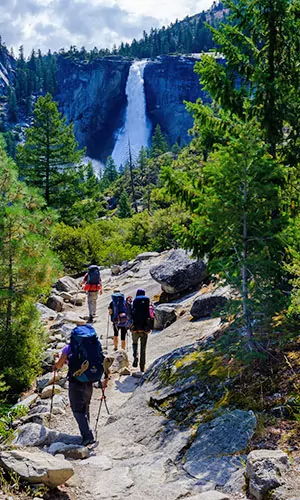 Yosemite National Park is home to some of the most epic and amazing hiking vacations in the world. Wildland Trekking offers trips with the best of Yosemite: waterfalls, views, wildlife, solitude, adventure, and fascinating natural and cultural interpretation.
Yosemite National Park is home to some of the most epic and amazing hiking vacations in the world. Wildland Trekking offers trips with the best of Yosemite: waterfalls, views, wildlife, solitude, adventure, and fascinating natural and cultural interpretation.
Guided Yosemite treks are all-inclusive, which covers permits; local transportation (excluded on specific tours); meals; equipment; safety systems, and professional hiking/wilderness guides; all of which allow visitors to maximize their time in Yosemite and focus entirely on enjoying the Park.
YOSEMITE ADVENTURE TOURS
GUIDED BACKPACKING ADVENTURES: these are for people interested in an authentic Yosemite hiking adventure away from the roads and crowds.
PORTERED TRIPS: on these innovative trips, guests hike with light day packs and camp near stunning backcountry locations.
INN-BASED PACKAGES: these tours are all-inclusive packages with lodging, amazing daily hikes, expert guides, meals, transportation, and more!
CAMPING-BASED HIKING PACKAGES: camping-based hiking packages provide all-around hiking experiences of Yosemite on wonderful outdoor vacations.
DAY HIKE TOURS: maximize your day in Yosemite on a fully guided, award-winning hiking tour on one of the Park’s best trails.





